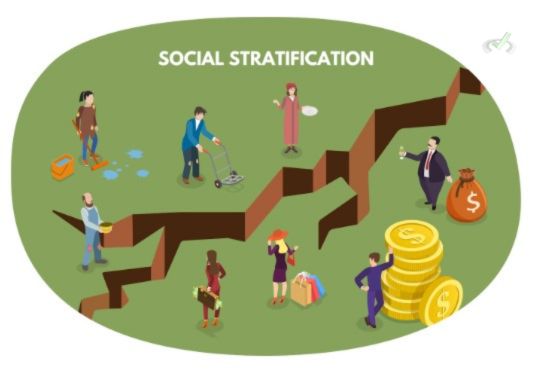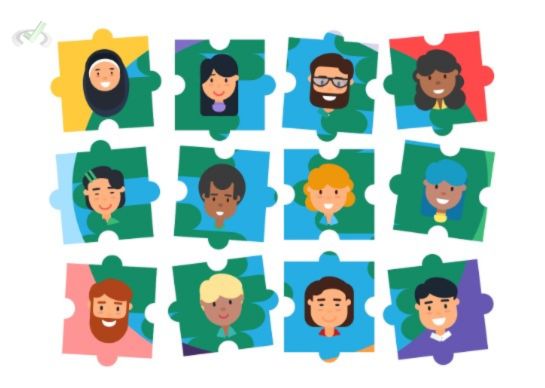Think about the different societal levels, like how some people have more money or power than others. This is what social stratification is about. It’s how society is divided into different layers or strata.
These layers can affect how much access people have to resources and opportunities. Let's dive into critical terms and concepts related to social stratification and understand how mobility works within this framework.
I. Introduction to Social Stratification
Social stratification is the ranking of people in any given society. This ranking affects access to resources like wealth, power, and prestige. It helps us understand why social inequality exists and how it affects people's lives.
Our society divides people into different social classes, such as the upper, middle, and lower classes. These divisions can lead to unequal opportunities and treatment. Understanding these terms and how mobility occurs within these layers can help us better understand social dynamics.

II. Key Terms in Social Stratification
Social Class
A social class is a group of people with similar wealth, influence, and status levels. In many societies, there are three main classes: upper, middle, and lower. Each class has different access to resources and opportunities.
Status
Status refers to a person's social position. It can be either ascribed status, which is given at birth (like race or gender), or achieved status, which is earned through actions (like becoming a doctor).
Power
Power is the ability to control or influence others, even if they don’t want to be influenced. Those with more power often have greater access to resources.
Prestige
Prestige is the respect and admiration that a particular status holds in society. For example, jobs like doctors and lawyers often have high prestige.
III. Systems of Stratification
Caste System
A caste system is a type of social stratification in which people are born into a particular social group and cannot change their status. This rigid system is often found in societies like India.
Caste System
A class system is more flexible than a caste system. It allows for social mobility, meaning people can move up or down the social ladder based on their achievements or lack thereof.
Meritocracy
Meritocracy is a system where social status is based on individual merit, such as talent, effort, and achievements. In a true meritocracy, everyone has an equal chance to succeed based on their abilities and hard work.
IV. Social Mobility
Social mobility refers to the ability to move up or down the social hierarchy. Various factors can influence it, including education, employment opportunities, and social connections.

Types of Social Mobility
- Horizontal Mobility: Moving from one position to another within the same social level. For example, changing jobs within the same industry.
- Vertical Mobility: Moving up or down the social hierarchy. For example, getting a promotion (upward mobility) or losing a job (downward mobility).
- Intergenerational Mobility: Refers to the changes in social status between different generations within the same family. For example, a child achieves a higher social status than their parents.
- Intragenerational Mobility: Changes in social status within a person's lifetime. For example, starting a low-paying job and eventually becoming a successful business owner.
V. Factors Affecting Social Mobility
Education
Education is a significant factor in social mobility. Hence, higher education often leads to better job opportunities and higher income, which can help individuals move up the social ladder.
Employment Opportunities
Access to quality jobs and opportunities for career advancement can significantly impact social mobility. Economic conditions, job market trends, and personal networks can influence these opportunities.
Social Networks
Social networks, or the people you know, can play a crucial role in social mobility. Connections can provide access to job opportunities, resources, and support, helping individuals advance their social status.
VI. Barriers to Social Mobility
Discrimination
Discrimination based on factors, such as race, gender, age, or other factors can hinder social mobility. It can limit access to education, employment, and other resources needed for upward mobility.
Economic Inequality
High levels of economic inequality can create significant barriers to social mobility. When wealth and resources are concentrated in the hands of a few, it becomes harder for others to move up the social ladder.
Social Capital
Lack of social capital, or the networks and connections that provide support and opportunities, can also hinder social mobility. These networks are necessary for individuals to find the resources needed to advance.
VII. Cultural Capital
Cultural capital refers to non-economic resources that enable social mobility. This can include education, style of speech, physical appearance, and even mannerisms. Cultural capital can give people an edge in social settings and job markets.

VIII. Structural Mobility
Structural mobility refers to changes in social status resulting from changes in the economy's structure. For example, shifting from a manufacturing-based economy to a technology-based economy can create new opportunities for social mobility.

IX. Intersectionality
Intersectionality examines how different aspects of a person's identity (like race, gender, and class) intersect and impact their social mobility. It highlights how multiple forms of discrimination can combine to affect a person's life chances.

X. Health Disparities
Health disparities refer to the differences in health outcomes between different social groups. Social stratification can lead to health disparities because those in lower social strata often have less access to healthcare and healthy living conditions.
XI. Bridge/Overlap
Understanding social stratification and mobility helps us comprehend broader social dynamics and related fields.
Sociology and Economic Inequality
The study of social stratification overlaps with economic sociology, examining how economic inequality impacts social structures and individual opportunities.
Education and Social Mobility
Educational sociology explores how access to education can affect social mobility. Understanding this can help in creating policies that promote equal educational opportunities.
Public Policy and Social Justice
Public policy is important in addressing barriers to social mobility. Policies to reduce discrimination, improve education, and ensure fair employment practices are crucial for promoting social justice.
Health Disparities
Social stratification impacts health outcomes, a critical topic in public health and medical sociology. Addressing these disparities involves understanding the social determinants of health and creating policies that improve healthcare access for all social groups.
XII. Wrap-Up and Key Terms
Let’s summarize the key points we’ve covered:
- Social Class: Groups with similar wealth, influence, and status.
- Status: Social position, either ascribed or achieved.
- Power: Ability to control or influence others.
- Prestige: Respect and admiration associated with a status.
- Caste System: Rigid social stratification with no mobility.
- Class System: Flexible system with potential for mobility.
- Meritocracy: Status based on individual merit.
- Social Mobility: Ability to move up or down the social hierarchy.
- Types of Mobility: Horizontal, vertical, intergenerational, and intragenerational.
- Factors Affecting Mobility: Education, employment opportunities, social networks.
- Barriers to Mobility: Discrimination, economic inequality, lack of social capital.
- Cultural Capital: Non-economic resources that aid social mobility.
- Structural Mobility: Changes in social status due to economic shifts.
- Intersectionality: How various identity aspects intersect and affect mobility.
- Health Disparities: Differences in health outcomes due to social stratification.
XIII. Practice Questions
Sample Practice Question 1
What is an example of intergenerational mobility?
A. A person getting a promotion within their jobB. A person changing careers but staying at the same income level
C. A child achieving a higher social status than their parents
D. A person starting a business and becoming successful
Ans. C
Intergenerational mobility is the changes in social status between different generations within the same family, such as a child reaching a higher status than their parents.
Sample Practice Question 2
Which system of social stratification allows for the most social mobility?
A. Caste System
B. Class System
C. Feudal System
D. Aristocracy
Ans. B
Unlike a rigid caste system, a class system is more flexible and allows for social mobility based on individual achievements.







 To help you achieve your goal MCAT score, we take turns hosting these
To help you achieve your goal MCAT score, we take turns hosting these 





















 reviews on TrustPilot
reviews on TrustPilot